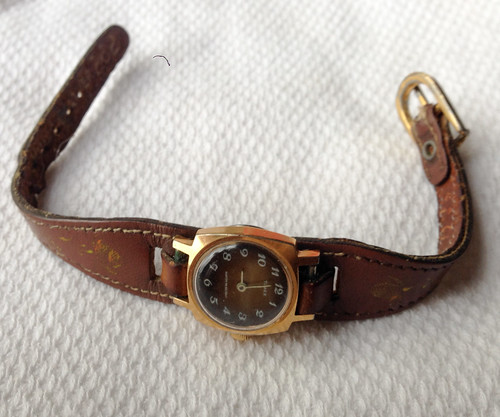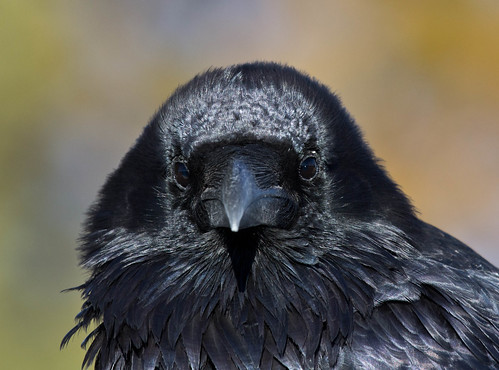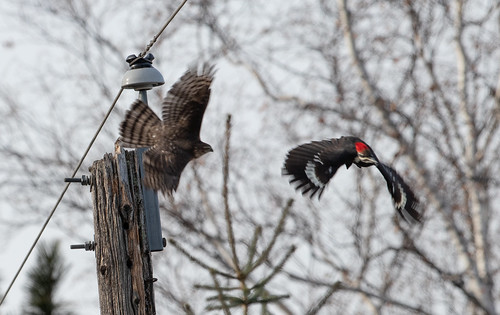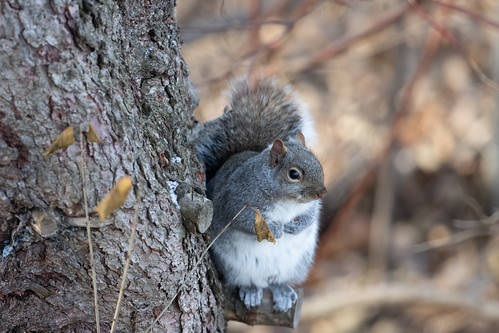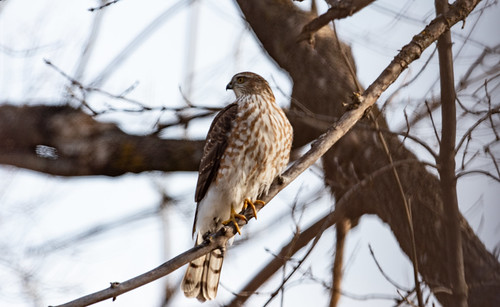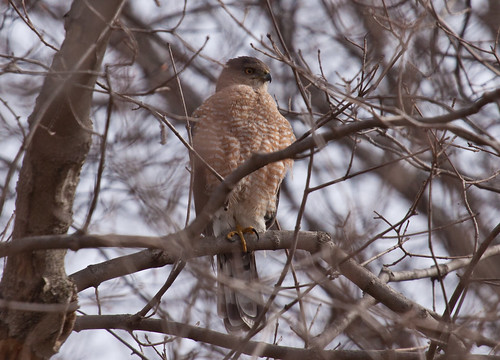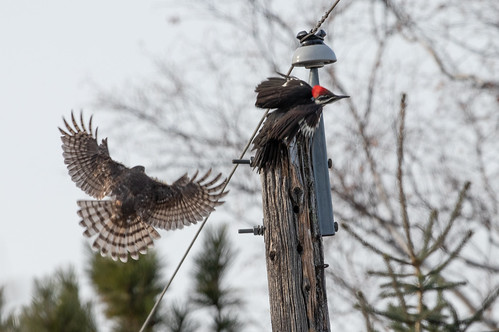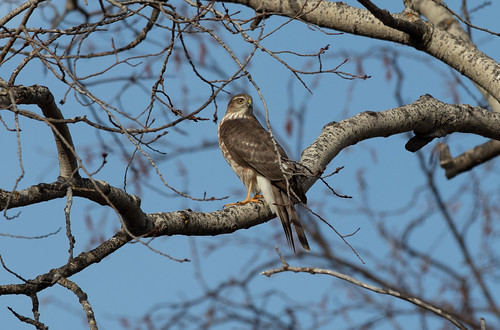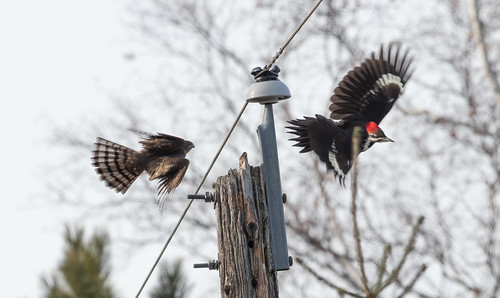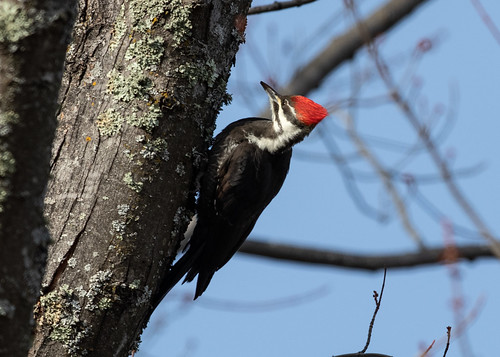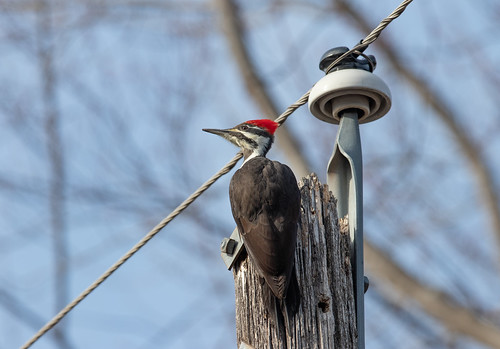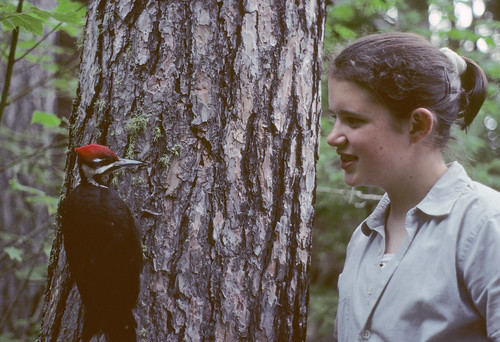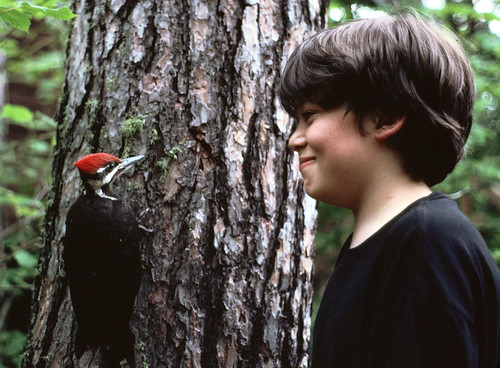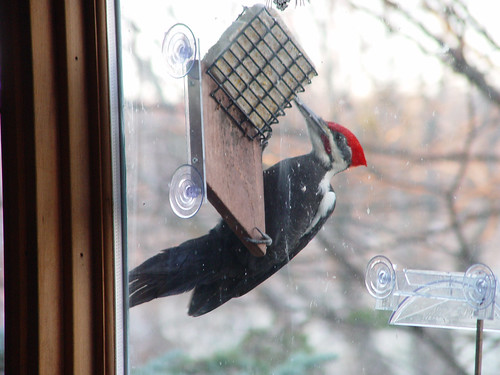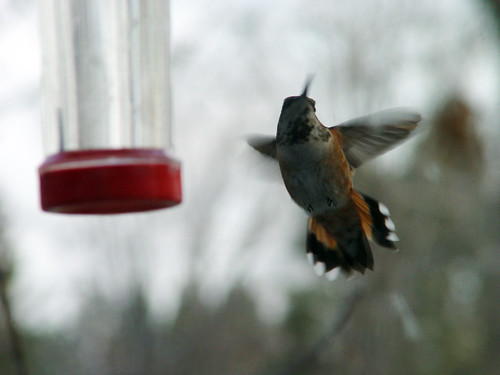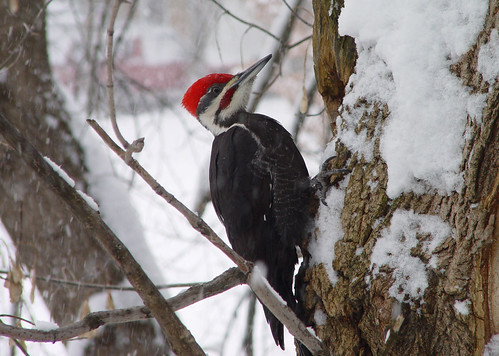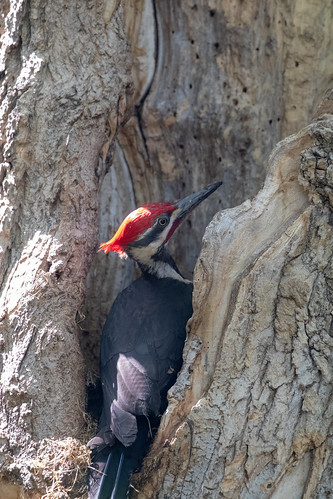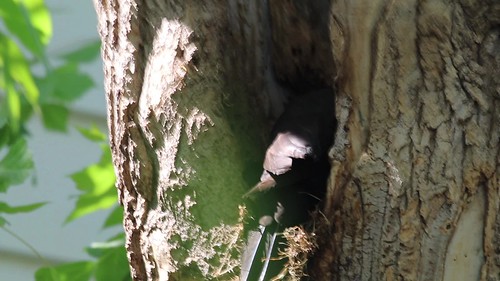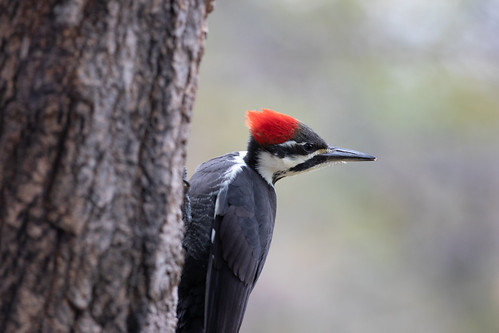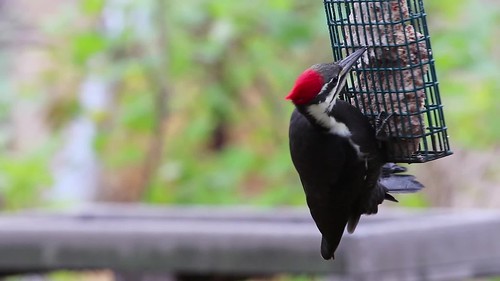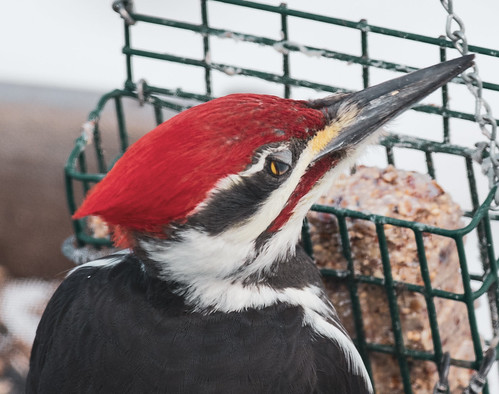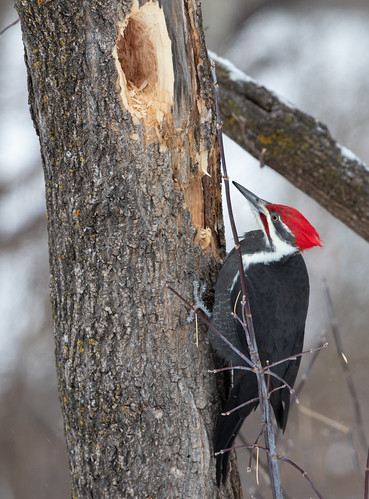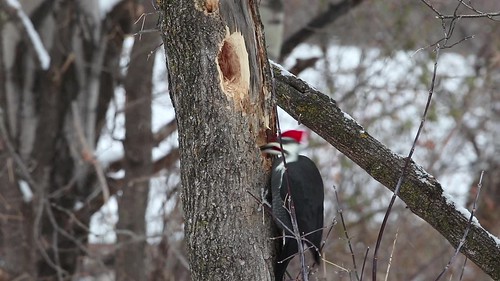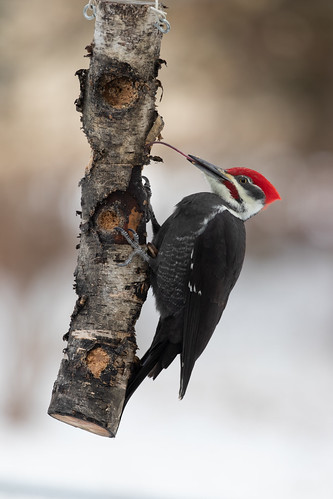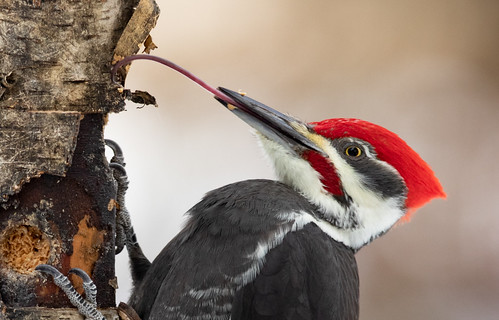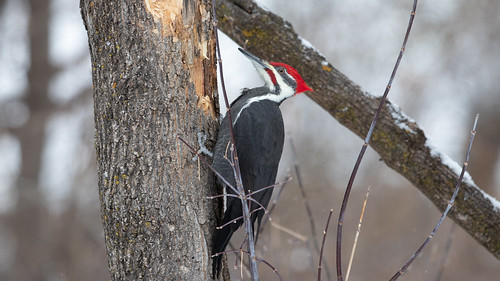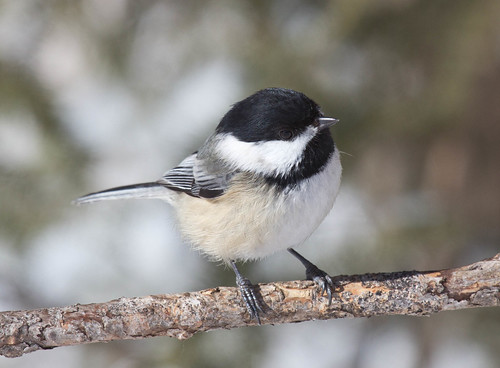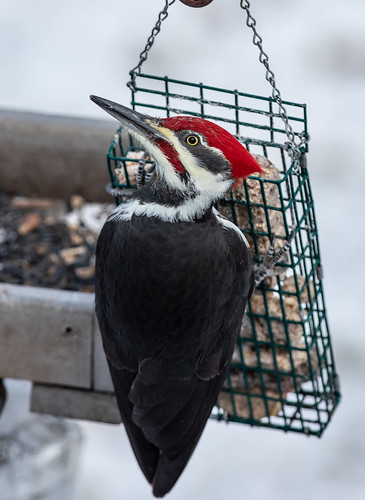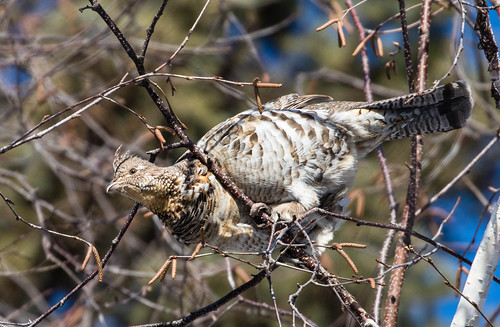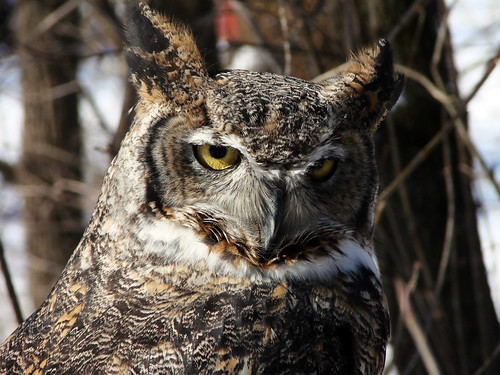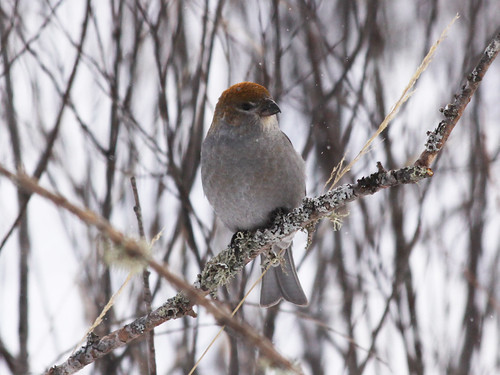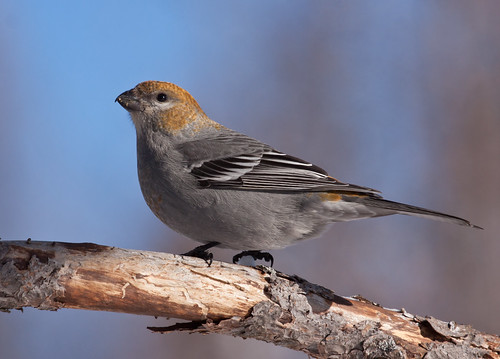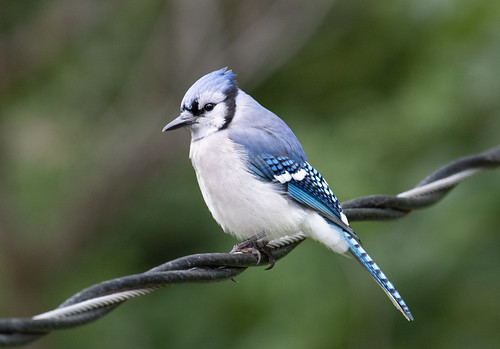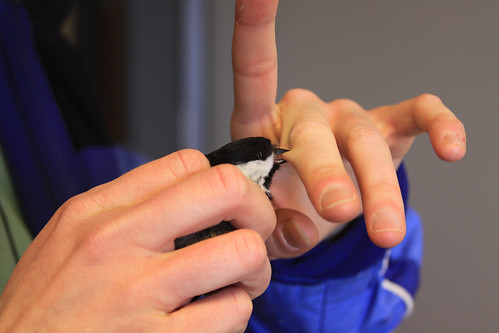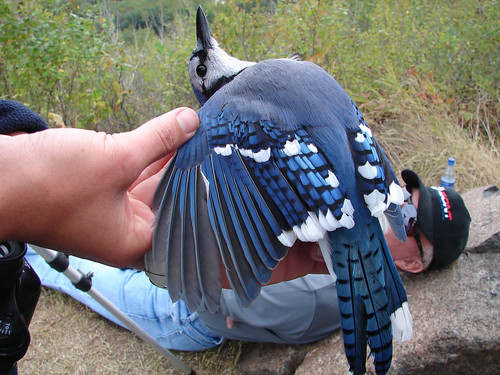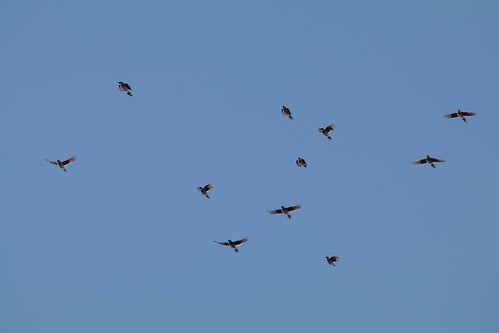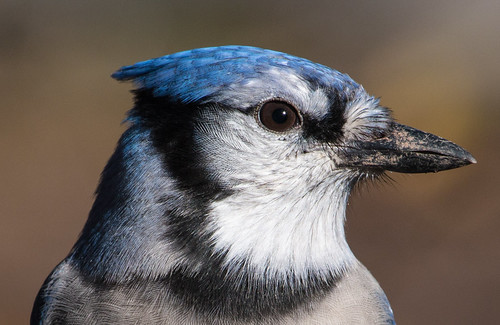Friday, November 30, 2018
Laura's Best Bird EVER: Raven with a Gift from Above
Back in 1981, right after I moved to Duluth when I was pregnant with my first baby, Russ refinished some floors in our apartment. Being pregnant, I simply couldn’t deal with the smells, so I stayed in Port Wing, Wisconsin, with his parents for a couple of weeks, taking long, long walks along country roads every morning. My favorite walk was about 10 miles, but if I wasn’t quite up to that or the weather grew unpleasant, I could keep it at 6. I could also add extensions to make the full hike more like 12 miles. That spring was when I grew especially bonded to Port Wing, developing a feel for the various habitats and which birds were where.
One day when I returned to the house, I noticed that my wristwatch, a gift from Russ that I treasured, was missing. It was on a leather strap, and the buckle had occasionally worked its way open. I thought it was lost forever.
The next day when I was three or four miles from Russ’s parents place, a raven flew over making some interesting squawks I’d never heard before. A few minutes later, that one or another flew over with something hanging out of its beak. I pulled up my binoculars, and there was my wristwatch! The raven flew in, closer and closer, right over my head. And voila! It dropped my wristwatch at my feet.
I don’t have words to describe my disbelief, surprise, and a joy that far, far surpassed my pleasure in having my good old watch back, oddly enough still in working order. What was going on in that raven’s mind? I’d not focused on the ravens on my morning walk except to notice them, and occasionally to call up a “good morning”—when I’m birding alone, I sometimes do carry on conversations with birds. I’ll never know if this raven thought that was interesting, endearing, or what, or whether it noticed me dropping the watch and associated me with it. Ravens often pick up shiny objects, and maybe when this one saw the person it associated with that object again, it decided to match us out of a sense of order rather than generosity. Maybe it wanted to give some random item it found to a random person.
I’ll never know. But it’s fun to speculate about the mystery. I’d read about how smart ravens are even before I started birding or ever saw a real one, but it had never occurred to me that raven intelligence and a kind of raven benevolence could possibly have an impact on my personal life.
When I think about that raven now, more than 37 years later, I’m still gobsmacked. I’ve spent the intervening years studying everything I could about avian intelligence, but the more I learn, the more I realize that I haven’t even scratched the surface.
We human beings have been smart enough to raze whole swaths of forest and prairie, blow Dresden, Hiroshima, Nagasaki, and Baghdad to smithereens, and enslave, torture, and kill millions of our very own species. Now we send probes to Mars and beyond, yearning to find more intelligent life out there that I think, based on the movies we create, we assume will be just as menacing as our own species.
Meanwhile, we still lack the basic intelligence to even notice, much less understand or communicate with, the intelligent life forms right here on our home planet—life forms intelligent enough to muster together satisfying lives without blowing anyone up or taking too much more than they need for their own security and happiness. They may be pretty much defenseless against us, but that says more about our own deadly sins of greed and wrath than anything about their intelligence.
My wristwatch stopped working a year or two after it dropped from the skies at my feet, but I’ve never been able to throw it away. Somehow that raven had transformed my inexpensive but beloved trinket into a priceless treasure. That raven was my best bird EVER!
Thursday, November 29, 2018
Drama on Peabody Street
I love raptors. I’ve written an entire book on owls, two about hawks, taken thousands of photos of them, rehabbed several hawks and owls for days or weeks, and lived with an Eastern Screech-Owl for 17 years. There is a hawk or owl on the cover of seven of the books I’ve written or co-authored. I also appreciate the role of predation in the natural world, and fully realize that prey species are much more numerous than top predators, able to withstand predation.
But this week I found myself very angry at one particular female Sharp-shinned Hawk who was hunting in my backyard. First she made a pass at a male Hairy Woodpecker in my back box elder tree. The woodpecker yelled out a few obscenities and hightailed it out of there. Then she made a pass at one of my stupider pigeons, who hadn’t even bothered to fly off the power line until the hawk was less than a foot away, after everyone else in the yard had disappeared. Even my squirrels were sitting tight by then.
The hawk must have missed the pigeon—not more than two minutes later, she was back. So far I was interested, but hardly angry. I took a few photos of her and got back to my work.
A few minutes later, I heard one of my Pileated Woodpeckers squawking. I ran to the window and there was the hawk, chasing my female Pileated Woodpecker, who’d been in one of my neighbor’s trees. From some angles the hawk looked bigger than the Pileated, and feisty as they are, I tend to associate Sharp-shinned Hawks with medium- to small-sized songbirds, so I started doubting my original identification. It seemed the right size for a Cooper’s Hawk, but looked wrong—the tail feathers were all the same length rather than tapered, the head seemed small, and the neck too short—Cooper’s Hawks have a weird, “bull-headed” appearance to my eyes.
The Pileated would alight on a tree, and rather than freeze, she’d peck restlessly and then look around to see where the hawk had landed. In a few of my photos, the two birds look about the same size, but it was pretty clear to my eyes at the time and in my photos after the fact that the Pileated was a little bigger, but not much.
Frank Nicoletti, the Banding Director at Hawk Ridge in Duluth, has held thousands of goshawks over his long career and a couple of orders of magnitude more Sharp-shinned Hawks. He was nice enough to look at my photos to help me with the identification. He confirmed that the bird was a Sharpie, but understood my confusion about how huge it looked attacking the Pileated, and it also had that white line above the eye, as immature goshawks typically do.
The wingspan of a Pileated Woodpecker averages 29 inches, while that of a large female Sharpie is only about 22 inches. But the wingspan of the smallest male goshawk is over 40 inches—in my photos of the chases, the hawk is definitely at least a little smaller than the Pileated.
Cooper’s Hawk wingspans run between 24 and 35 inches, so using size alone, I’d have bet good money on my hawk being a Coop, but it just didn’t look like one—when perched, the tail seemed too short, and the head and neck not big enough. Frank told me that it’s weird but of the three accipiters, the Cooper’s Hawk is the outlier, and that a lot of people just don’t realize that it’s easier to confuse immature sharpies and goshawks than either one with Cooper’s.
I’ve not spent much time studying and identifying hawks in the field—I’m supposed to be sort of an expert, but really, you need to spend day after day, week after week, watching them and holding them in the hand as Frank does to be a genuine expert at hawk ID. Frank is one of the world’s nicest guys, so he wouldn’t have made me feel foolish about not being certain whether my bird was a sharpie or a goshawk, but I was still relieved when he said young sharpies and goshawks can be oddly easy to mix up. The one in my yard was clearly a female to be as large relative to the Pileated as she was.
Anyway, the hawk dive-bombed the Pileated ten or twelve times while I watched—I lost count after I got to eight. The Pileated kept alighting on a tree trunk or the power pole, tapping restlessly.
Then she'd fly off to another perch, the hawk in hot pursuit as the woodpecker cursed the way the Hairy Woodpecker had, only in Pileated Speak. I don’t think a Pileated would act that way with a Goshawk, and if it did, it probably wouldn’t have survived more than two or three of those flights. This whole drama started in my neighbor’s yard to the east, then in my own yard for several attacks, and then moved on to my neighbor to the west, and beyond. I lost track of them when they were three houses down and moving west.
For the rest of the afternoon until dark, I kept scanning the trees to see whether my Pileated would come back, but neither she nor my male appeared again until the male came in and ate bedtime snacks at three feeders before flying off toward one of his night roost trees. I’m going to be a nervous wreck for the next day or two, until I see the female again. Yes, I like hawks in general. But not when one goes for MY Pileated Woodpeckers.
Tuesday, November 20, 2018
Laura's Best Bird EVER: Yesterday's Pileated Woodpecker
The Pileated Woodpecker is one of my favorite of all birds—it’s so striking, both in appearance and more literally, in how it makes its living, striking its powerful beak into trees and suet cakes. The first time I saw pictures of it in my field guides, I became obsessed. I saw my first in June 1976. Russ got a distant but identifiable picture, which may be why I’m so uniquely thrilled when I get photos of this species.
Every time I’ve seen one ever since I’ve been thrilled—it’s a bird you just can’t take for granted.
Raising a young pileated for several weeks in 1997 while I was rehabbing was an extraordinary experience. That was in the days of film, before I was taking many photographs, but I did get a few of Gepetto with Katie and Tommy.
In November 2004, when I had my first digital camera, a Pileated was coming regularly to the little suet feeder stuck with suction cups to the window of my upstairs home office—I got a photo of him through the window, which made me happy despite how he’d gooped up the glass with his sloppy suet-eating habits.
I nicknamed him Jeepers, and saw him a lot that winter because that was when a Rufous Hummingbird was also coming to my feeders.
On December 2, we had a fierce blizzard, and I was in such a panic about my poor little hummer that I opened that window so she could feed inside my office. I had to wear my winter coat, snow pants, and gloves to work at my computer that day. In early afternoon, I looked out the open window to see Jeepers in the box elder tree right there. He stayed put long enough to give me the best photo of a Pileated that I was to take for years, as if thanking me for opening my house to the cold, hungry refugee.
I’ve had a few opportunities in the past couple of years to take even better Pileated Woodpecker close-ups in my yard, because a pair has been hanging out in my neighborhood. This spring the male was working a big rotten natural cavity in the box elder in the side yard by the house—the same tree I’d photographed Jeepers in 14 years ago. I think he and the female were taking turns roosting in that cavity at night sometimes, because one or the other would appear in the tree at dawn, way earlier than I usually see them.
Then last week when the male was in the suet feeder in my backyard, I took a bunch of photos of him on rapid burst, and one caught him in mid-blink, revealing both his eyelid and his nictitating membrane. Unlike in most birds, which close their eyes with the larger lid below the eye, or as owls and we humans do, with the larger eyelid above the eye, most woodpeckers have the eyelid sweeping closed from the front of the eye, which protects the bird's eye from flying wood chips. Surely that photo would be the best I could do as far as photographing a Pileated Woodpecker.
Then yesterday, the male spent a big chunk of the day in my yard, giving me three superb photo ops. First he was working on a cavity in my backyard box elder—not the one right next to the house but one I can see out the back windows. I cranked open the window and got both photos and videos of him working on that.
I’ve written a lot about bird tongues, especially the long, extruding tongues of woodpeckers and hummingbirds (such as this blog entry: More about Bird Tongues than a Normal Person Would Want to Know), but I’d taken only a couple of decent photos of Ruby-throated Hummingbirds sticking out their tongues before yesterday. I’ve been trying to capture the moment a Pileated Woodpecker sticks out its tongue for years, but the best I could manage was a couple of pictures barely showing the tip. This one turned out better than I ever dreamed—the bird is in perfect profile, the tongue sticking out at full length.
I got one last set of shots of him in the afternoon. Now he was at the suet feeder in my back office window. My 300 mm lens was at hand, and I had to step back to focus, but it was at such close range that I got a close-up of his face. That photo isn't cropped at all.
I’ve never had a day offering such a variety of pileated poses, and to have finally managed to get one of a pileated tongue! I have no idea why this one male Pileated Woodpecker decided to give me such an extraordinary day, but I sure enjoyed it, both in the taking pictures and in the enjoying them afterward. I never named this particular Pileated Woodpecker, but surely he’s my best bird EVER!
Thursday, November 15, 2018
Our Far-Flung Correspondents: Brita, Odin, and Their Mom Sarah
 |
| Brita and Odin |
My sisters and I were avid listeners of your program growing up in the Duluth area in the 1980's and 90's. I remember sending you little illustrations of birds along with a letter or two. My sister, Kate, even asked you about a robin she saw in winter; you reassured her that it was indeed likely a robin, which brought immense comfort to her within our questioning family.
Now I'm 40 years old and raising my two children in Duluth to love the birds and nature. We homeschool, and therefore spend a ton of time outdoors. … Now my daughter, Brita, 8, is learning to identify birds. Other than a distrust of pigeons and our squawking laying hens, she realizes the importance of all birds in the circle of life. She just finished reading the entire Little House series of books, and absorbed a lot of Laura's bird observations in the 1880's.
My son, Odin, 5, fills up the feeders and gathers the chicken's eggs. He can identify some bird songs and says his favorites are the chickadee, ostrich, and ruffed grouse. We have gotten several of your books and thank you for educating us.
 |
| Brita is drawing the little mystery bird in Laura Ingalls Wilder's The Long Winter. |
A few weeks ago, I heard back from Sarah:
I wanted to send you one more message letting you know we've subscribed to your blog, and loved looking at all the photos and information of all your bird species.
What a life list and adventures you've had, rehabbing birds and traveling!
Today while she had her binoculars out, spotting a male cardinal and several chickadees, Brita remarked, "I wish I could fly! I'd soar with the hawks in the sky".
She is drawing birds looking at photos from your books. We also got a book about Roger Tory Peterson and are learning about Charles Darwin's documentation of evolution studying the finch's beaks. All very interesting.
Thanks again, for all your work and teachings.
 |
| Brita and Odin dissect owl pellets |
They're such cute little birds, and I like their little black cap. They should be the Minnesota state bird because they are so common and live here all winter long. And, I've almost had one land on my hand.
I’m inordinately pleased that both Brita and Odin name the chickadee among their favorite birds. Like Brita, I place the Pileated Woodpecker among my top birds, too. Brita said she "likes the call of the pileated woodpeckers best". She thinks "they are the most beautiful birds in the northern forest."
I also like Odin’s choice of Ruffed Grouse—that’s a pretty cool bird, too.
And I like his broad world view, including the Ostrich among his favorites. I’ve been to Uganda once, but not to Kidepo National Park, the one spot in the whole country where Ostriches live. I hope I can go back to Africa—I still yearn to see wild Ostriches, Secretarybirds, and Zebras.
Like me, Brita thinks about both species of birds and individuals. She named the male pileated woodpecker at her place "Pili". She calls the chickadee she sees in their yard "Chee-Chee" and the others are "Chee-Chee's friends!"
It is ever so rewarding to realize that people who started listening to For the Birds as children became more aware, and more fond, of birds in part because of me, and that now, as grownups, they’re sharing this love for birds with their own children. My tombstone will probably read, “She blathered about birds.” It’s lovely to know that some people appreciate those blatherings.
Monday, November 12, 2018
Laura’s Best Bird EVER! ™ Pine Grosbeak: My “Once Upon a Dream” Bird
Part I: A relevant but tortuous history of my love affair with the Disney version of Sleeping Beauty.
In 1959, when I was seven years old, Walt Disney’s animated film Sleeping Beauty came out. My mother took us to see it at the Mercury Theater in Chicago. This was the first movie I ever saw in a theater, and everything about the experience filled me with joy.
I was familiar with the storyline of Sleeping Beauty before this. When I was very small, a family friend had read it to me from a big, ornate fairytale book, but that story seemed horrifying in every way. As in the Disney version, the evil fairy cursed the baby on her christening day: on her sixteenth birthday, the child would prick her finger on the spindle of a spinning wheel and die. But in that other version, the last good fairy didn’t make things better, at least not as far as I could see. She made it so Sleeping Beauty would sleep for a hundred years only to wake up when some strange prince came along and kissed her. What could possibly be good about that? Every single person she knew and loved would be long dead, including her dog. (Of course she’d have a dog!) And now she’d be stuck forever married to a creepy guy who had climbed into her bed to kiss her when she didn’t even know him, and he didn’t know her! To me, this seemed like a fate worse than death, and that was more than half a century before the #metoo movement. Even as a small child, years before Betty Friedan or Gloria Steinem spoke up about feminism, I hated that story.
But then the Disney version came along. Before we went to see the movie, my Grandpa gave me the Little Golden Book version, and it was beautiful! Two of the fairies were named Flora and Fauna, words that I knew meant plants and animals (even though I thought the one named for plants should have been the one wearing the green dress). Sleeping Beauty’s real name was Aurora which, as the movie narrator said, means the dawn. In the woodcutter’s cottage in the forest, the fairies called her Briar Rose, which was equally lovely.
And that forest was so beautiful! As an adult, I realize how unnatural it was, but sixty years ago, the generic trees and flowers thrilled this urban child’s eyes. The book showed a blue bird alighting on Aurora’s hand and lots of animal friends, but didn’t show the charming way the rabbits, squirrel, owl, and songbirds worked together to give her a dream dance partner wearing the prince’s hat, cloak, and boots. That scene in the movies defies physics, biology, and natural history, but seemed wondrous to a seven-year-old; even today it’s impossible for me to see it without smiling. That woodland scene with the animals remains among my top ten scenes in any movie.
Aurora was no generic babe to Prince Philip—he fell in love with her beautiful, warm soprano voice and her charming interactions with the animals, whose love for her made it clear she was a kind and good person. And Philip was no generic Prince—Aurora didn’t even know he was a prince, just as he didn’t know she was a princess. He loved being out in the forest as much as she did, and he clearly loved his horse as much as she loved her forest animals. And Sampson the horse clearly loved Philip right back.
Sleeping Beauty is often touted as the epitome of a sexist fairy tale, the main female character asleep and powerless, needing a man to rescue her. That is definitely true of the original fairy tale, but Disney’s rendering rises far, far above that even while keeping the plot line that gives it the title. Sleeping Beauty may have been powerless to affect Maleficent’s curse, but the prince was equally powerless. The characters who controlled the outcome from start to finish were women—the three good fairies and Maleficent. The fairies rescued Philip from Maleficent’s dungeon, armed him, and ran interference every step of the way, magically turning the boulders dropped on Philip into bubbles, the arrows shot at him into flowers, the boiling oil poured on him into a rainbow, and Maleficent’s raven into a statue. The fairies untangled him when the forest of thorns snagged him, and at last enchanted and directed his sword straight into Maleficent’s dragon-heart. No, it wasn’t Prince Philip who rescued Aurora—it was the fairies. And the Prince did not kiss her because she was a pretty, generic woman in a bed, but because he and she already genuinely loved each other.
The movie ended, as Disney fairy tales are wont to, at a ball with the prince and princess dancing away, her wearing an insipid pastel Disney princess dress. But it was pretty clear they’d spend the days, months, and years of their future together in the forest. Maybe they’d even become birdwatchers!
Anyway, that was my perfect fantasy fairy tale as a child, not because of the ending but because of that glorious scene with the forest creatures. Disney never replayed the entire feature Sleeping Beauty on television during my childhood, though they did play a long excerpt on The Wonderful World of Color around when the movie was new. Disney didn’t re-release it in theaters until the summer of 1970, after my first year of college.
I talked Russ, now my husband but then my boyfriend, into going to see it at a Saturday afternoon matinee. That was when multiplexes were new, and the theater we went to was also showing Airport, the first big disaster blockbuster, starting at the same time, so there was a long line to get tickets. There were plenty of adults in line, but also lots of parents with small children—it was pretty clear which movie different people were headed for.
We got into line at the same moment that Wayne and Gloria, two of our good friends from high school, did. We hadn’t seen them in a year and were happy to catch up as we stood in line. But of course we knew that they were there to see Airport. As we got closer and closer to the ticket booth, Russ grew increasingly uncomfortable, clearly mortified about them finding out he was going to see Sleeping Beauty. I was so focused on his discomfort that I didn’t notice that Wayne was acting the same way. When we made it to the front of the line, Wayne said, “You first,” to Russ, and Russ said, “No—YOU first.” Sure enough, Wayne and Gloria had also come to see Sleeping Beauty—it apparently was the quintessential "chick flick." And it was just as wonderful as Gloria and I remembered. The next summer, a few months before we got married, Russ bought a 1971 Ford Pinto, which we named Sammy, for Sampson, Prince Philip’s horse.
Part II: Cut to the chase
As lovely as Disney’s Sleeping Beauty was for me, it was a treasure of childhood, not adulthood. Seeing the movie again may have been a momentary revisiting of that glorious childhood experience, but college and work experiences were filling me with new visions and dreams. I became a birder in 1975, and the real birds I could look at in my field guides and see in the flesh whenever I was outside easily and entirely displaced those generic Disney birds.
The only identifiable birds in Sleeping Beauty were Maleficent's raven (that came to such a tragic end) and the Great Horned Ow dancing with Briar Rose. I’ll never forget seeing my first real one, on January 15, 1976, in Baker Woodlot, the exact same forest where I’d seen my first chickadee less than a year before. It was the morning after a blizzard, some branches still topped with fresh snow, the frozen air not just bracing but biting. That was the winter when I discovered that trees moan and creak with cold—wonderful sounds I’d never paid attention to, or maybe even heard, before I started spending so much time outside searching for birds. Until I became a birder, as much as I loved being outdoors, my joy was diffuse and misty, like a baby cooing at colors and patterns before they resolve into specific objects.
It wasn’t until I started paying close attention to birds that I started noticing different habitats. Generic trees became birches, maples, aspen, spruce and pine. I’d never noticed how oaks cling to their leaves long after beech branches are stripped bare. These features and so much more, sharpening the generic into the specific, enhanced my appreciation of forests, giving them a richness I’d never even suspected, much less appreciated when Disney forests were all I knew.
It wasn’t until I started paying close attention to birds that I started noticing different habitats. Generic trees became birches, maples, aspen, spruce and pine. I’d never noticed how oaks cling to their leaves long after beech branches are stripped bare. These features and so much more, sharpening the generic into the specific, enhanced my appreciation of forests, giving them a richness I’d never even suspected, much less appreciated when Disney forests were all I knew.
On this morning, I was in my element, all my senses reveling in this real-life forest, and then there it was, that honest-to-goodness owl, looking down at me from a tall snag, so unspeakably beautiful, so unmistakable, so specific—not just a lifer, but a warm alive individual looking directly into my eyes—that I started to cry. I didn’t even think of Sleeping Beauty. Reality was too perfect and too consuming to conjure fantasy. That owl was magnificent, but it was no "Once Upon a Dream" bird.
But almost two years later, on December 3, 1977, a new lifer brought that wondrous fantasy of the Sleeping Beauty forest scene to life with a genuine once upon a dream experience.
By then, Russ and I were living in Madison, Wisconsin, in an apartment on University Avenue near Walnut Street. To get to my favorite birding spot, I had to walk down Walnut a few blocks, passing some university buildings and a huge commuter parking lot to reach the tree-lined walking path along University Bay Drive, which curved along the shoreline of Lake Mendota.
On this morning, as I was still passing the commuter lot, I started hearing an unfamiliar but pretty, whistled call note. Reflexively, I whistled back, continuing to walk toward the lake. The song had been coming from the northwest, meaning once I cleared the parking lot I’d have to turn left on the walking path to find the bird, but as I walked and whistled, the sound grew louder more quickly than I was walking—apparently, the bird was drawing closer to me as I drew closer to it. When I reached University Bay Drive, the sound seemed very close.
I whistled again, and suddenly, in flew my bird—robin-sized; soft gray back, breast, and sides; shiny black wings with white wing bars and flight-feather edging; the head a shade of russet I’d never seen except in my field guide. And picturing that, I knew this bird was a Pine Grosbeak—a lifer, Number 263 on my lifelist. I drank in the vision. Oddly enough, the bird seemed to be gazing at me in return.
I don’t know what compelled me to whistle again as I watched him, but I did, and the bird flitted a few branches closer and called back. I whistled again, and the bird drew even closer. Then for some inexplicable reason, I took off my left glove and reached out, whistled, and suddenly, just like that, the miracle happened. The bird alighted on my finger. Yep—exactly the way the little animated bird alighted on Sleeping Beauty’s extended hand, here I was, for one brief, shining moment, magically drawn into the most magical scene of the most magical Disney movie of my childhood. In my mind I could hear Mary Costa singing “I know you—I walked with you once upon a dream” even as I stood there, wide-awake, my heart so full I could hardly breathe much less break into song myself. The bird’s toes were icy cold with sharp little claws, his belly soft and warm against my finger.
Twice since then, kinglets have alighted on my hand momentarily, but not while looking into my face—I think they simply mistook my fingers for branches. Chickadees, nuthatches, and one Yellow-rumped Warbler have come to my hand for mealworms, a couple of Blue Jays have landed on me for peanuts, and when I was rehabbing, lots of baby birds I was taking care of have flown to me when I was teaching them to become wild. But never before or since has a truly wild bird alighted on me like this, neither for food nor as a mistake but simply because it wanted to be closer to me for a magical moment. I still don’t understand it.
Twice since then, kinglets have alighted on my hand momentarily, but not while looking into my face—I think they simply mistook my fingers for branches. Chickadees, nuthatches, and one Yellow-rumped Warbler have come to my hand for mealworms, a couple of Blue Jays have landed on me for peanuts, and when I was rehabbing, lots of baby birds I was taking care of have flown to me when I was teaching them to become wild. But never before or since has a truly wild bird alighted on me like this, neither for food nor as a mistake but simply because it wanted to be closer to me for a magical moment. I still don’t understand it.
Pine Grosbeaks are flocking birds that I seldom see alone. Usually when no other Pine Grosbeaks are about, lone individuals join robin or waxwing flocks, as if they'll come to any port in a storm. I wonder if this bird had been searching for other birds to associate with, so yearning for any connection at all that my whistling forged a temporary, magical bond.
However it happened, here I stood, this beautiful bird perched on my finger. I don’t know how long the moment lasted—it was one of those events when time really does seem to stand still, but it couldn’t have been too long because my fingers weren’t stiff, much less frostbitten, when at last the bird turned and flitted to a nearby shrub. He turned to face me one last time and I gave him one last whistle. He didn’t hurry away—just moseyed on, giving me time to come to my senses.
I’ve never been able to wrap my head around that experience. But that Pine Grosbeak, my real-life once-upon-a-dream bird, was surely my best bird EVER.
I’ve never been able to wrap my head around that experience. But that Pine Grosbeak, my real-life once-upon-a-dream bird, was surely my best bird EVER.
Sunday, November 11, 2018
In My Prime
Today, I turned 67 years old. That’s not quite double the age I was when I started producing “For the Birds.” I was 34 and a half on May 12, 1986, so on November 10, 2020, the day before I turn 69, I’ll have been doing “For the Birds” for exactly half my life.
 |
| Wisdom, her mate, and their egg and chick in 2018 |
Meanwhile, even as I get older, I’m still younger than the oldest known wild bird, a Laysan Albatross named Wisdom, who was originally banded on Midway Island back in 1956. At the time, she was incubating an egg, so she had to be a minimum of 5 years old, making her at least 67 right now.
Wisdom is way way spryer than I am—she laid an egg again this year and raised another chick, more than three decades after I stopped reproducing and more than two decades after it became impossible for me to reproduce. If she has any wrinkles, they’re well hidden under her feathers, which are exactly the same color they’ve been since she was a year old. I guess I’m just as glad my own plumage is different from when I was one—I was a bald baby, with just a bit of peach fuzz on my own first birthday.
Wisdom and her chick survived the tsunami in 2011 when she was at least 60. Her age and experience almost certainly contributed to her having a higher, safer nesting territory than more than a hundred thousand albatross pairs who lost their young in that single horrible event.
This year, a new hazard for albatrosses was publicized. The introduced mice on Midway Island have learned how helpless incubating albatrosses are. They jump up and start eating the live birds in the back of their head, where the birds can’t reach them. I first heard about this last year, and have been nervous about Wisdom, but so far so good. Matt Brown, superintendent for the U.S. Fish and Wildlife Service in Papahānaumokuākea Marine National Monument, the protected marine area encompassing Midway Atoll NWR said, “We’re fortunate that she nests in town next to residential buildings where we’ve regularly done mouse suppression for human safety. It’s not a guarantee of her safety, but Wisdom does benefit.”
As long as Wisdom is out there raising babies, I can’t feel too old yet. I like finding the Top Eleven things about my age every year, but there isn’t all that much to say about the number 67. There was never a TV show about Route 67, Paul McCartney didn’t write a song about when he was 67, Simon and Garfunkel didn’t speculate about how terribly strange it would be to be 67, and 67 is not the jersey number for any of my favorite Chicago Cubs. So my Top Eleven list runs a little short this year:
- 67 is the minimum age of Wisdom.
- 67 is a prime number, so for a full year I can honestly say I’m in my prime.
- 67 is a “lucky number.” Not “lucky” in the way that 11 is my lucky number, but lucky as defined in a 1956 paper in Mathematics Magazine by Gardiner, Lazarus, Metropolis, and Ulam, who defined a lucky number as any natural number in a set generated by the sieve of Josephus Flavius. That is, after listing all the natural numbers starting with 1, you look at the next number, 2, and remove every second number, including 2. Now 3 is the second number and the next remaining number, so you remove every third number. Then 5 is the next remaining number, so you remove every fifth number. You end up with a string of numbers starting 1,3, 7, 9 13, 15, 21, 25, 31, 33, 37, 43, 49, 51, 64, 67, 69, 73,75, 79, 87, 93, 99, 105, 111… Wikipedia has a great article on lucky numbers.
- The Number 67 species on my lifelist is the American Redstart.
So my being 67 promises to be a prime and lucky year filled with American Redstarts. I wish I could figure out a way of getting to see Wisdom—I can no longer meet all the physical requirements required to spend a season with the albatrosses, and it’s pretty difficult otherwise to get to Midway. But just knowing she’s out there makes me happy, today and every day.
Friday, November 9, 2018
Blue Jays: What We Know, and What We Don't
(From a For the Birds program originally recorded for December 2, 2009.)
Blue Jays are one of the most conspicuous North American birds. They’re abundant in many habitats throughout the East, and increasingly in the West. And they’re big and brightly colored with a distinctive silhouette thanks to their perky little crest, and they’re noisy as well, so they draw the attention of both eyes and ears. Their omnivorous diet makes them easy to maintain in captivity, so caged Blue Jays have been subjected to many scientific studies over the past two centuries.
It’s fairly easy to trap and band Blue Jays, so scientists have done a lot of field studies on them, too. Bird banders, who hate dealing with cardinals and grosbeaks because of their terrible bite, and chickadees, who pack a wallop, are often surprised to learn that despite their feisty reputation, Blue Jays are shockingly docile in the hand. They surrender the moment they realize they can’t get away.
But it’s extremely hard to capture more than a handful of Blue Jays at one locality—they’re just too smart, and too communicative. So despite their abundance and conspicuousness, our understanding of their breeding biology, demography, and sociality remains poor. But we do know a lot about their basic natural history.
The most in-depth, long-term study of them is probably one conducted at the Archbold Biological Station in Florida. Blue Jays there were color-marked when captured at nets set out to study Florida Scrub-Jays, so records kept on those Blue Jays were serendipity, not focused research. But the scientists learned that among that sedentary group, the basic social unit is a monogamous pair, which remains in the same small area year-round. Pairs do not defend their territory in any classical sense, but they do defend the nest from other jays that come too close. And unlike Florida Scrub-Jays, Blue Jays do not breed cooperatively, but mob predators and intruders, and make social displays as members of a loosely organized neighborhood flock.
Unlike the Florida population, Blue Jays in the Midwest and Northeast are migratory, with thousands counted on single spring and fall days from many good migration vantage points like Hawk Ridge in Duluth. But scientists have never been able to make sense of Blue Jay migration. They know that some individuals are present year-round throughout their range, including the northernmost and southernmost reaches. In autumn, Blue Jays migrating from farther north may replace some jays leaving an area. The distance traveled by migrants is extremely variable, and the proportion that migrates is probably less than 20 percent of the population even in the northernmost parts of their range. Jay movements may be related to acorns and other mast crops but no one has been able to prove this. In other words, Blue Jay migration is one big mystery.
People expend so much brain power wondering about intelligent life on other planets when one of the most intelligent creatures right here on earth continues to baffle us. Blue Jays are excellent mimics, but I bet that if we played musical tones as they did at the end of Close Encounters of the Third Kind, not a single jay would waste its time imitating the tones. They’d be too busy stealing everyone’s lunches.
Blue Jays are one of the most conspicuous North American birds. They’re abundant in many habitats throughout the East, and increasingly in the West. And they’re big and brightly colored with a distinctive silhouette thanks to their perky little crest, and they’re noisy as well, so they draw the attention of both eyes and ears. Their omnivorous diet makes them easy to maintain in captivity, so caged Blue Jays have been subjected to many scientific studies over the past two centuries.
It’s fairly easy to trap and band Blue Jays, so scientists have done a lot of field studies on them, too. Bird banders, who hate dealing with cardinals and grosbeaks because of their terrible bite, and chickadees, who pack a wallop, are often surprised to learn that despite their feisty reputation, Blue Jays are shockingly docile in the hand. They surrender the moment they realize they can’t get away.
But it’s extremely hard to capture more than a handful of Blue Jays at one locality—they’re just too smart, and too communicative. So despite their abundance and conspicuousness, our understanding of their breeding biology, demography, and sociality remains poor. But we do know a lot about their basic natural history.
The most in-depth, long-term study of them is probably one conducted at the Archbold Biological Station in Florida. Blue Jays there were color-marked when captured at nets set out to study Florida Scrub-Jays, so records kept on those Blue Jays were serendipity, not focused research. But the scientists learned that among that sedentary group, the basic social unit is a monogamous pair, which remains in the same small area year-round. Pairs do not defend their territory in any classical sense, but they do defend the nest from other jays that come too close. And unlike Florida Scrub-Jays, Blue Jays do not breed cooperatively, but mob predators and intruders, and make social displays as members of a loosely organized neighborhood flock.
Unlike the Florida population, Blue Jays in the Midwest and Northeast are migratory, with thousands counted on single spring and fall days from many good migration vantage points like Hawk Ridge in Duluth. But scientists have never been able to make sense of Blue Jay migration. They know that some individuals are present year-round throughout their range, including the northernmost and southernmost reaches. In autumn, Blue Jays migrating from farther north may replace some jays leaving an area. The distance traveled by migrants is extremely variable, and the proportion that migrates is probably less than 20 percent of the population even in the northernmost parts of their range. Jay movements may be related to acorns and other mast crops but no one has been able to prove this. In other words, Blue Jay migration is one big mystery.
People expend so much brain power wondering about intelligent life on other planets when one of the most intelligent creatures right here on earth continues to baffle us. Blue Jays are excellent mimics, but I bet that if we played musical tones as they did at the end of Close Encounters of the Third Kind, not a single jay would waste its time imitating the tones. They’d be too busy stealing everyone’s lunches.
Subscribe to:
Comments
(
Atom
)

